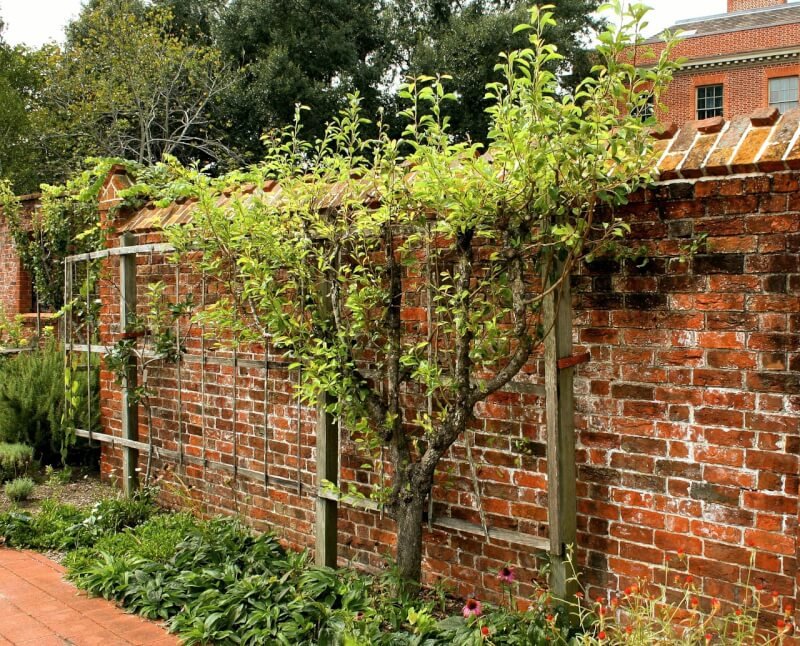Have you ever dreamed of having your own fruit trees, but thought you didn’t have enough space in your garden? Well, fear not, because with a little bit of creativity and ingenuity, you can create your very own DIY fruit tree espalier. Espalier is a technique of training fruit trees to grow in a flat, two-dimensional form against a wall or support structure. Not only does it save space, but it also adds a touch of elegance to your garden. In this article, we will guide you through the step-by-step process of making your own DIY fruit tree espalier, so get ready to transform your garden into a fruitful paradise.
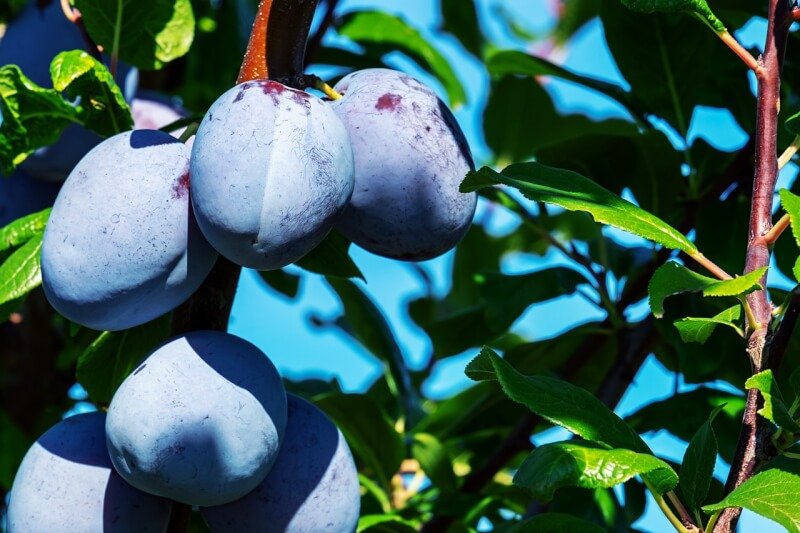
Choosing the Right Fruit Tree
Consider your climate
When choosing a fruit tree, it is crucial to consider the climate of your area. Different fruit tree varieties have specific temperature and humidity requirements for optimal growth and fruit production. Some fruit trees thrive in warm, tropical climates, while others are better suited for cooler regions. Research the temperature range and average rainfall in your area to determine which fruit trees are suitable for your climate. This will ensure that the tree can withstand the environmental conditions and produce healthy fruits.
Consider the available space
Another important factor to consider when choosing a fruit tree is the available space in your garden. Fruit trees come in various sizes, from dwarf varieties to large, spreading trees. Determine whether you have enough space to accommodate the mature size of the tree. Take into account both the height and width of the tree to ensure that it does not overcrowd other plants or structures in your garden. Additionally, consider the roots of the tree and choose a location where they will not interfere with underground structures or utilities.
Research suitable fruit tree varieties
Once you have considered your climate and available space, it is time to research suitable fruit tree varieties. Each type of fruit tree has its own specific requirements and characteristics. Consider factors such as the taste of the fruit, disease resistance, pollination requirements, and the length of the growing season. Research different varieties and consult with local garden centers or agricultural extension offices for recommendations specific to your area. This will help you select a fruit tree that is well-suited to your climate and will thrive in your garden.
Preparing the Site
Select the ideal location
Choosing the ideal location for your fruit tree is crucial for its overall health and productivity. Fruit trees require at least six to eight hours of direct sunlight each day for optimal growth and fruit production. Look for a location in your garden that receives ample sunlight throughout the day. Additionally, consider factors such as wind exposure and protection from extreme weather conditions. Avoid planting fruit trees in low-lying areas prone to frost or areas that are consistently wet and poorly drained.
Clear the area
Before planting your fruit tree, it is essential to clear the area of any vegetation or debris. Remove any weeds, grass, or other plants from the planting site. This will help prevent competition for nutrients and water and reduce the risk of pests and diseases. Clearing the area also allows you to assess the condition of the soil and make any necessary amendments before planting.
Prepare the soil
The soil quality plays a significant role in the overall health and productivity of your fruit tree. Before planting, it is essential to prepare the soil by loosening it and adding organic matter. This will improve drainage, aeration, and nutrient availability for the tree. Use a garden fork or a tiller to loosen the soil to a depth of at least 12 inches. Incorporate well-rotted compost or aged manure into the soil to enrich it with organic matter. This will provide essential nutrients and improve the soil structure for the fruit tree’s roots.

Building the Support Structure
Decide on the espalier design
Espalier is a technique of training fruit trees to grow flat against a wall or trellis. Before building the support structure, decide on the espalier design you want to create. There are various designs to choose from, such as horizontal cordon, fan, or Belgian fence. Consider the available space and the design that best suits your garden aesthetics. Research different espalier designs and select one that will allow for adequate fruit production while fitting within your garden space.
Measure and mark the posts
Once you have decided on the espalier design, measure and mark the locations for the support posts. The number of support posts will depend on the size of your fruit tree and the design you have chosen. Measure the distance between each post to ensure even spacing. Use stakes or markers to mark the locations of the support posts before proceeding with digging the holes.
Dig holes for the support posts
After marking the locations, dig holes for the support posts. The depth of the holes will depend on the height of the support structure you want to create. As a general guideline, dig holes that are approximately one-third the height of the posts. Ensure that the holes are wide enough to accommodate the posts without constriction. Use a post hole digger or a shovel to dig the holes, making sure to remove any rocks or debris from the soil.
Install the support posts
Once the holes are dug, it is time to install the support posts. Place the posts vertically in the holes, ensuring that they are straight and securely anchored in the ground. Backfill the holes with soil, firmly packing it around the posts to provide stability. Use a level or tape measure to ensure that the posts are of equal height and aligned correctly. Double-check their stability by giving them a gentle shake.
Attach horizontal support wires
To complete the support structure, attach horizontal support wires between the posts. The number of wires will depend on the espalier design you have chosen. Attach the wires at equal intervals, ensuring they are taut and securely fastened to the posts. The wires will provide support for the fruit tree’s branches and help guide their growth along the desired pattern. Use wire clips or vine eyes to secure the wires to the posts. Double-check the tension of the wires to ensure they can adequately support the weight of the tree.
Planting the Fruit Tree
Prepare the tree for planting
Before planting the fruit tree, it is essential to prepare it for transplantation. Remove any damaged or diseased branches, as well as any roots that are damaged or excessively long. Soak the tree’s roots in water for a few hours before planting to ensure they are adequately hydrated. Trim back any excessively long or tangled roots to promote healthy growth.
Dig a planting hole
Dig a planting hole that is wide and deep enough to accommodate the tree’s roots comfortably. The size of the hole should be at least twice the width of the tree’s root ball. This will provide ample space for the roots to spread out and establish themselves in the soil. Ensure that the hole is deep enough so that the tree’s graft union, if present, is above the soil line.
Place the tree in the hole
Carefully place the fruit tree in the planting hole, ensuring that it is centered and upright. Spread out the tree’s roots within the hole, taking care not to bend or break them. The root collar, where the trunk meets the roots, should be level with or slightly above the surrounding soil. Adjust the tree’s position as necessary to ensure it is straight and properly aligned with the support structure.
Backfill the hole with soil
Once the tree is properly positioned, backfill the hole with soil. Use the soil that was previously removed from the hole, gently packing it around the tree’s roots. Take care not to over-compact the soil, as this can lead to poor drainage and hinder root development. Gradually fill the hole, lightly firming the soil as you go to eliminate any air pockets. Ensure that the tree remains straight and that the root collar is at the correct level.
Water the newly planted tree
After backfilling the hole, give the newly planted tree a thorough watering. This will help settle the soil and eliminate any air pockets around the roots. Provide enough water to thoroughly moisten the soil to the depth of the tree’s roots. Place a layer of mulch around the base of the tree to conserve soil moisture and suppress weed growth. Monitor the soil moisture regularly and water as needed, ensuring that the tree receives adequate hydration during its establishment period.
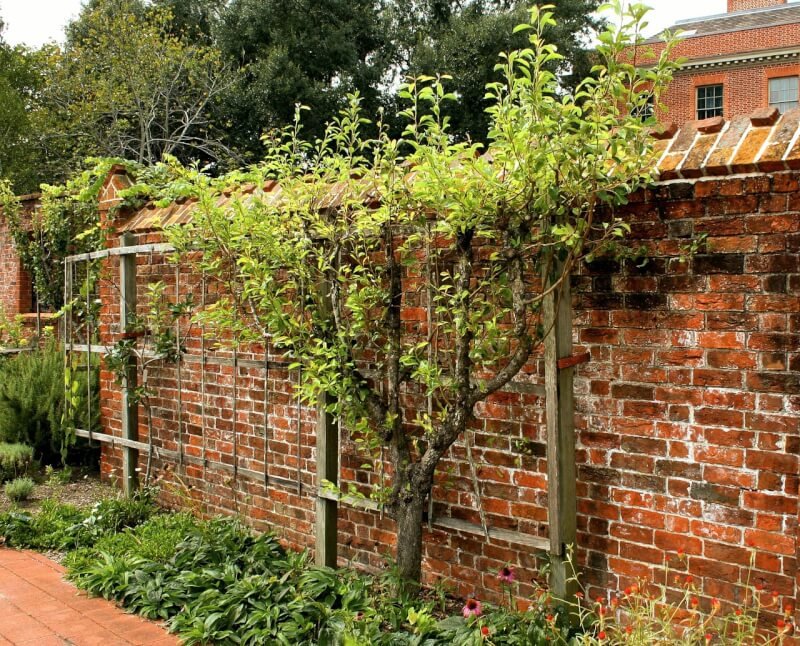
Pruning and Training
Understand the basics of pruning
Pruning plays a crucial role in maintaining the health and shape of your fruit tree. Familiarize yourself with the basics of pruning, including when and how to prune different types of fruit trees. Pruning goals may include shaping the tree, removing dead or diseased wood, improving air circulation, and promoting fruit production. Learn about different pruning techniques such as thinning, topping, and heading back to achieve the desired results.
Prune the fruit tree in its dormant season
Most fruit trees are pruned during their dormant season, typically in late winter or early spring before new growth begins. This allows the tree to focus its energy on healing and regenerating after the pruning process. Remove any dead, damaged, or diseased branches, as well as any water sprouts or suckers that may have formed. Thin out overcrowded branches to improve air circulation and light penetration. Prune back or train branches to maintain the desired shape and size of the tree.
Train the tree using wires and ties
As the fruit tree grows, it is essential to train its branches along the support wires to achieve the desired espalier design. Use soft ties or horticultural wire to gently secure the branches to the wires. Take care not to tie the branches too tightly, as this can damage the tree and restrict its growth. Regularly monitor the tree’s growth and adjust the placement of the ties as necessary to guide the branches along the desired pattern.
Regularly monitor and adjust the growth
Throughout the growing season, regularly monitor the growth and development of your fruit tree. Look for any branches that are growing in an undesired direction and gently redirect them along the support wires. Prune back any branches that are growing too vigorously or interfering with the overall shape of the tree. Regular maintenance and adjustments will help maintain the integrity of the espalier design and promote healthy, productive growth.
Fertilizing and Mulching
Determine the appropriate fertilizer
Proper fertilization is vital for the healthy growth and fruit production of your fruit tree. Before applying any fertilizer, determine the specific nutrient requirements of the tree. Different fruit tree varieties have varying nutrient needs, so it is essential to select a fertilizer that meets those requirements. Consider using a balanced fertilizer with a ratio of nitrogen (N), phosphorus (P), and potassium (K) appropriate for fruit trees. Additionally, choose organic fertilizers whenever possible to promote soil health and minimize environmental impacts.
Apply fertilizer during the growing season
Fertilize your fruit tree during the growing season to provide it with the necessary nutrients for optimal growth and fruit production. Apply the fertilizer according to the manufacturer’s instructions, taking care not to over-fertilize, as this can lead to nutrient imbalances and potential damage to the tree. Spread the fertilizer evenly around the base of the tree, avoiding direct contact with the trunk. Water the tree thoroughly after applying the fertilizer to ensure proper nutrient absorption.
Mulch around the base of the tree
Mulching around the base of the fruit tree provides numerous benefits for its overall health and productivity. Apply a layer of organic mulch, such as wood chips or compost, around the tree’s base. The mulch helps retain soil moisture, regulate soil temperature, suppress weed growth, and promote healthy microbial activity in the soil. Keep the mulch layer a few inches away from the trunk to prevent the accumulation of moisture that can lead to rot or disease.
Monitor soil moisture regularly
Regularly monitor the soil moisture levels around your fruit tree. Fruit trees require consistent and adequate moisture to thrive and produce healthy fruits. Use a moisture meter or insert your finger into the soil to assess its moisture content. If the soil feels dry to the touch, it is time to water the tree. Ensure that the water reaches the root zone of the tree by watering deeply and allowing the soil to absorb the moisture. Avoid overwatering, as this can lead to root rot and other problems.
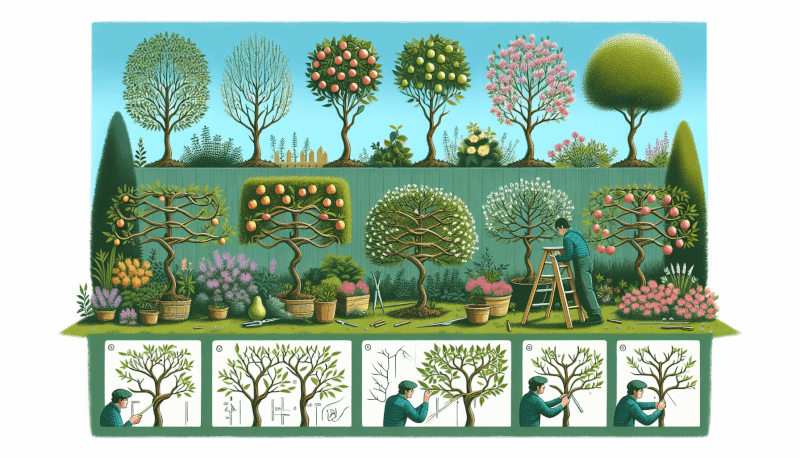
Pest and Disease Control
Identify common fruit tree pests and diseases
Fruit trees are susceptible to various pests and diseases that can affect their health and fruit production. Familiarize yourself with the common pests and diseases in your area to effectively monitor and control them. Common pests include aphids, fruit flies, scale insects, and caterpillars, while diseases can include fungal infections, bacterial infections, and viral diseases. Regularly inspect your fruit tree for any signs of pest infestation or disease symptoms, such as curled leaves, spotted fruits, or unusual discoloration.
Implement preventive measures
Prevention is key when it comes to pest and disease control in fruit trees. Implementing preventive measures can help minimize the risk of infestation or infection. Maintain good garden hygiene by removing fallen fruits, leaves, and debris that can serve as breeding grounds for pests and disease-causing organisms. Regularly prune and thin out branches to improve air circulation and light penetration, reducing the favorable conditions for pests and diseases. Additionally, consider using disease-resistant fruit tree varieties and practicing crop rotation to mitigate the risk of recurring issues.
Use organic pest control methods
When dealing with pests and diseases in your fruit tree, it is best to use organic pest control methods whenever possible. Chemical pesticides can have adverse effects on the environment and beneficial organisms, so consider natural alternatives. Use insecticidal soaps or oils, such as neem oil, to control common pests. Encourage natural predators, such as ladybugs and birds, to help control pest populations. Additionally, apply organic fungicides or bactericides to control fungal or bacterial diseases. Consult with local garden centers or agricultural extension offices for recommendations on organic pest control methods specific to your area.
Regularly inspect and treat as necessary
Regularly inspect your fruit tree for any signs of pests or diseases and treat them promptly. Early detection and intervention can help prevent the issue from spreading and causing significant damage. Monitor the tree’s leaves, fruits, and branches for any abnormalities and take appropriate action. Remove or prune affected parts of the tree and dispose of them properly to prevent further infection. Treat the tree with organic pest control methods or disease management techniques as necessary, following the recommended application rates and timing.
Watering and Irrigation
Establish a watering schedule
Establishing a watering schedule is essential for the overall health and productivity of your fruit tree. Fruit trees generally require regular and deep watering to ensure they receive enough moisture for optimal growth and fruit production. As a general guideline, water the tree deeply once a week during the growing season. Adjust the frequency and duration of watering based on your climate, soil type, and the tree’s specific needs. Consider factors such as rainfall and temperature to avoid overwatering or underwatering the tree.
Ensure proper irrigation
Proper irrigation is crucial to ensure that your fruit tree receives adequate water without wasting it. There are several methods of irrigation to consider, such as drip irrigation, soaker hoses, or sprinklers. Each method has its pros and cons, so choose one that works best for your garden and water source. Ensure that the irrigation system provides a slow and even distribution of water to the tree’s root zone. Avoid overhead watering, as it can promote fungal diseases and water wastage.
Avoid overwatering
While it is essential to provide adequate water for your fruit tree, it is equally important to avoid overwatering. Overwatering can lead to root rot, oxygen deprivation, and the development of fungal diseases. It can also prevent the roots from accessing oxygen and nutrients, hindering the tree’s overall health. To avoid overwatering, monitor the soil moisture regularly using a moisture meter or by checking the soil’s moisture content with your finger. Water deeply and infrequently, allowing the soil to dry out slightly between waterings.
Monitor soil moisture levels
Regularly monitor the soil moisture levels around your fruit tree to ensure it is receiving adequate hydration. Insert a moisture meter or your finger into the soil to assess its moisture content. If the soil feels dry to the touch, it is time to water the tree. Avoid waiting until the tree shows signs of stress, such as wilting leaves or drooping branches, as this indicates that the tree has already suffered from inadequate moisture. Consistent monitoring will help you establish a watering routine that meets the tree’s specific needs.
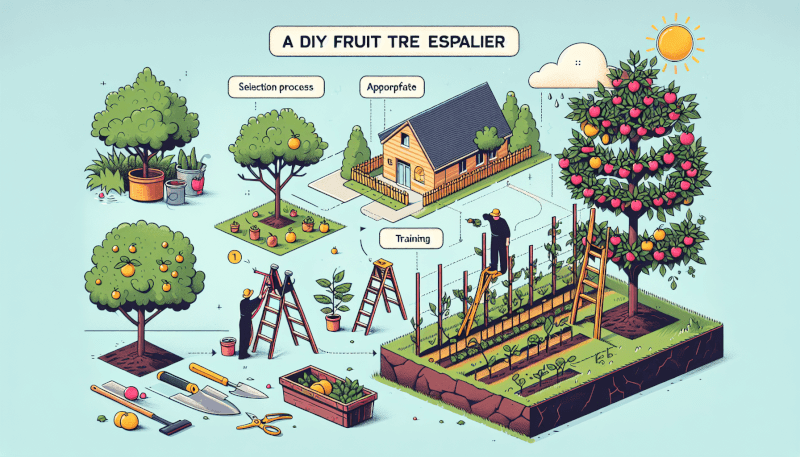
Harvesting and Maintenance
Learn when to harvest fruits
Learning when to harvest the fruits from your tree is crucial to ensure optimal flavor and quality. Each type of fruit has specific indicators of ripeness, such as color changes, firmness, and flavor. Research the specific harvesting guidelines for your fruit tree variety to know when the fruits are ready to be picked. Harvest the fruits at the peak of ripeness to enjoy their full flavor and nutritional value.
Properly store and enjoy your harvest
Once you have harvested the fruits from your tree, it is important to store them properly to prolong their freshness and flavor. Different fruit types require specific storage conditions, so research the appropriate methods for your fruit variety. Some fruits, such as apples and pears, can be stored in a cool, dark location. Others, like berries, are best consumed fresh or preserved immediately. Enjoy your harvest by incorporating the fruits into delicious recipes or sharing them with family and friends.
Perform routine maintenance tasks
Regular maintenance tasks are crucial for the overall health and longevity of your fruit tree. Perform routine pruning to remove dead or diseased wood and maintain the desired shape of the tree. Monitor the tree for any signs of pest infestation or disease symptoms and take appropriate action as necessary. Remove any weeds or grass that may compete with the tree for nutrients and water. Regularly inspect the support structure and make any necessary repairs or adjustments to ensure the tree’s stability.
Monitor tree health and address issues promptly
Regularly monitor the health of your fruit tree and address any issues promptly. Look for any signs of stress, such as wilting leaves, discolored foliage, or reduced fruit production. Address issues such as nutrient deficiencies or diseases as soon as they are detected. Consult with local garden centers or agricultural extension offices for guidance on identifying and treating specific issues in your fruit tree. Prompt action will help preserve the health and productivity of your tree.
Conclusion
Growing your own fruit tree can be a rewarding experience, providing you with delicious fruits and enhancing the beauty of your garden. By considering your climate, available space, and suitable fruit tree varieties, you can choose the right tree for your garden. Preparing the site, building a support structure, and planting the tree properly are essential steps for ensuring its successful establishment. Pruning, fertilizing, and monitoring for pests and diseases will help maintain the tree’s health and productivity. Proper watering, harvesting at the right time, and performing routine maintenance tasks will contribute to the long-term success of your fruit tree. With patience, care, and attention, you can enjoy the bountiful harvests from your own fruit tree for years to come.

